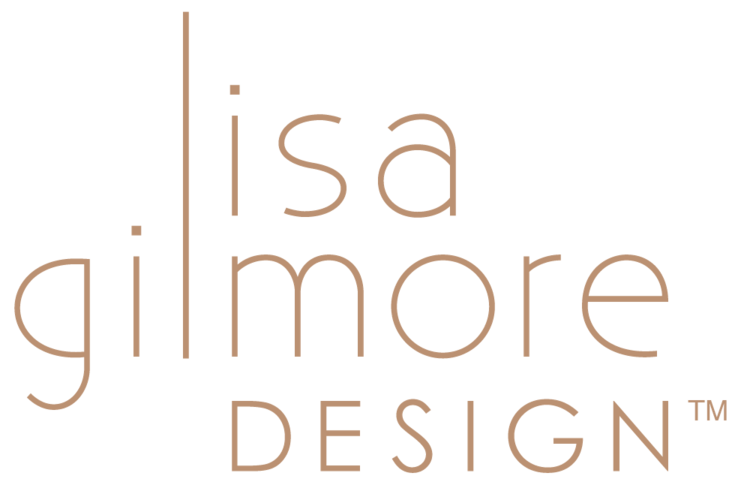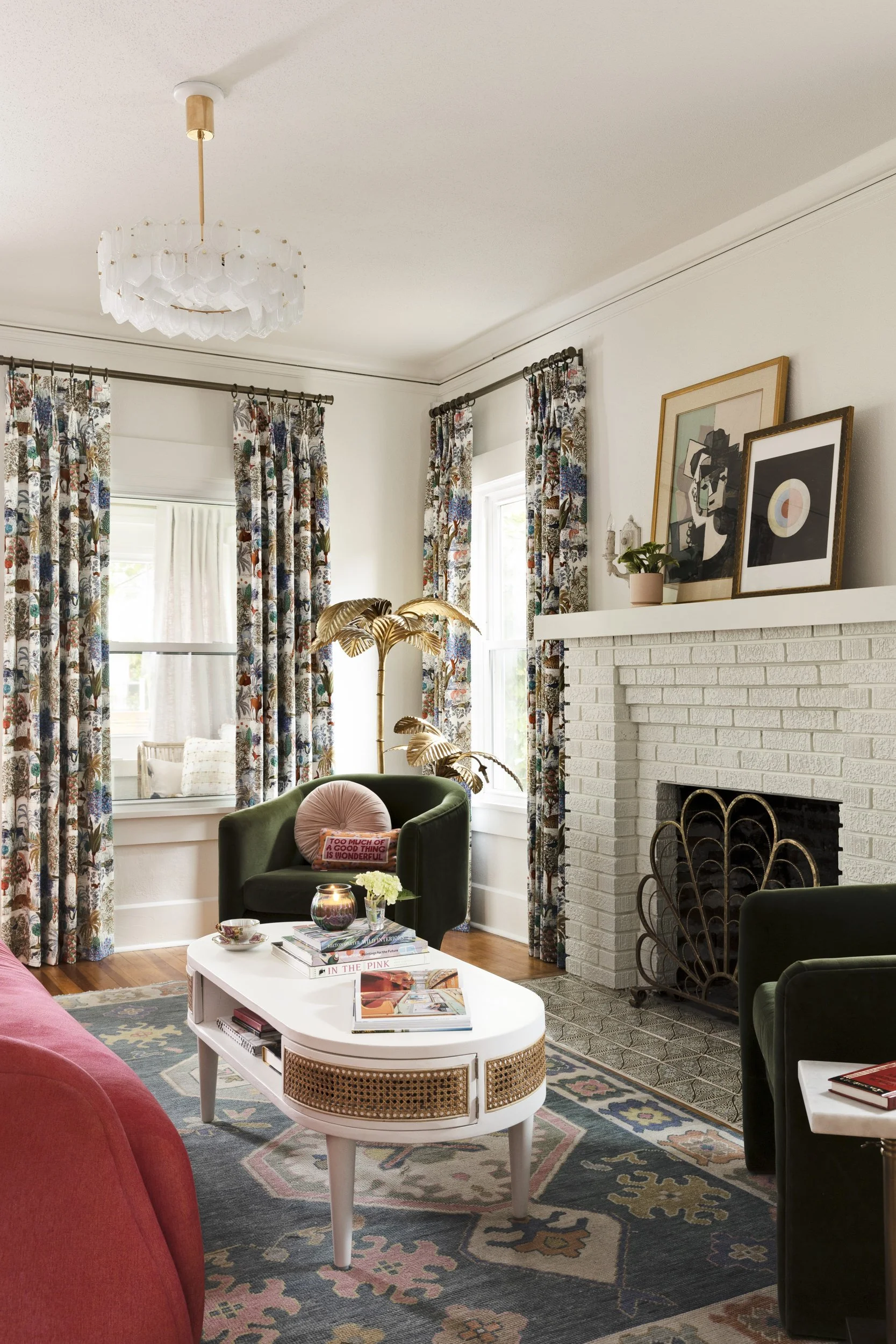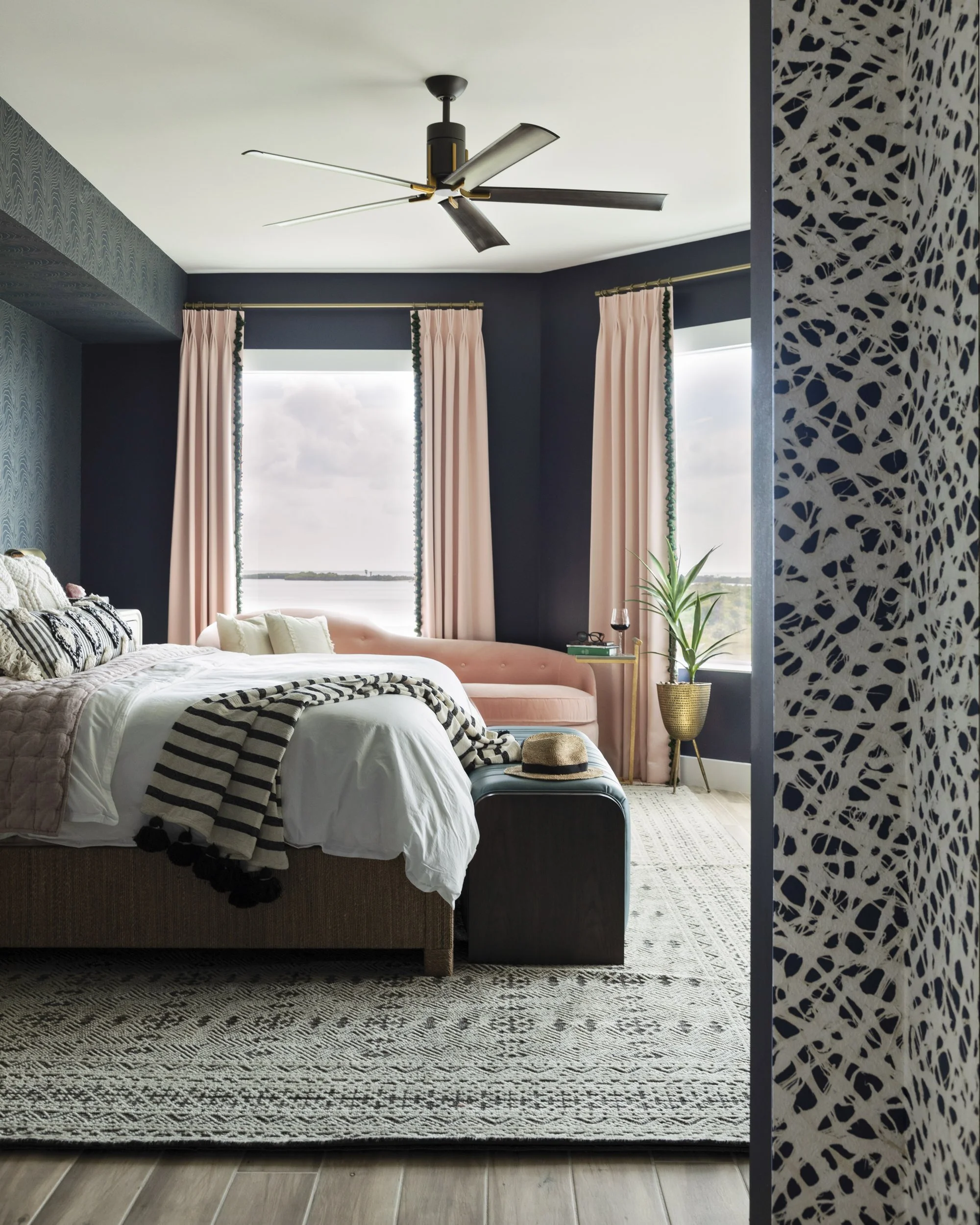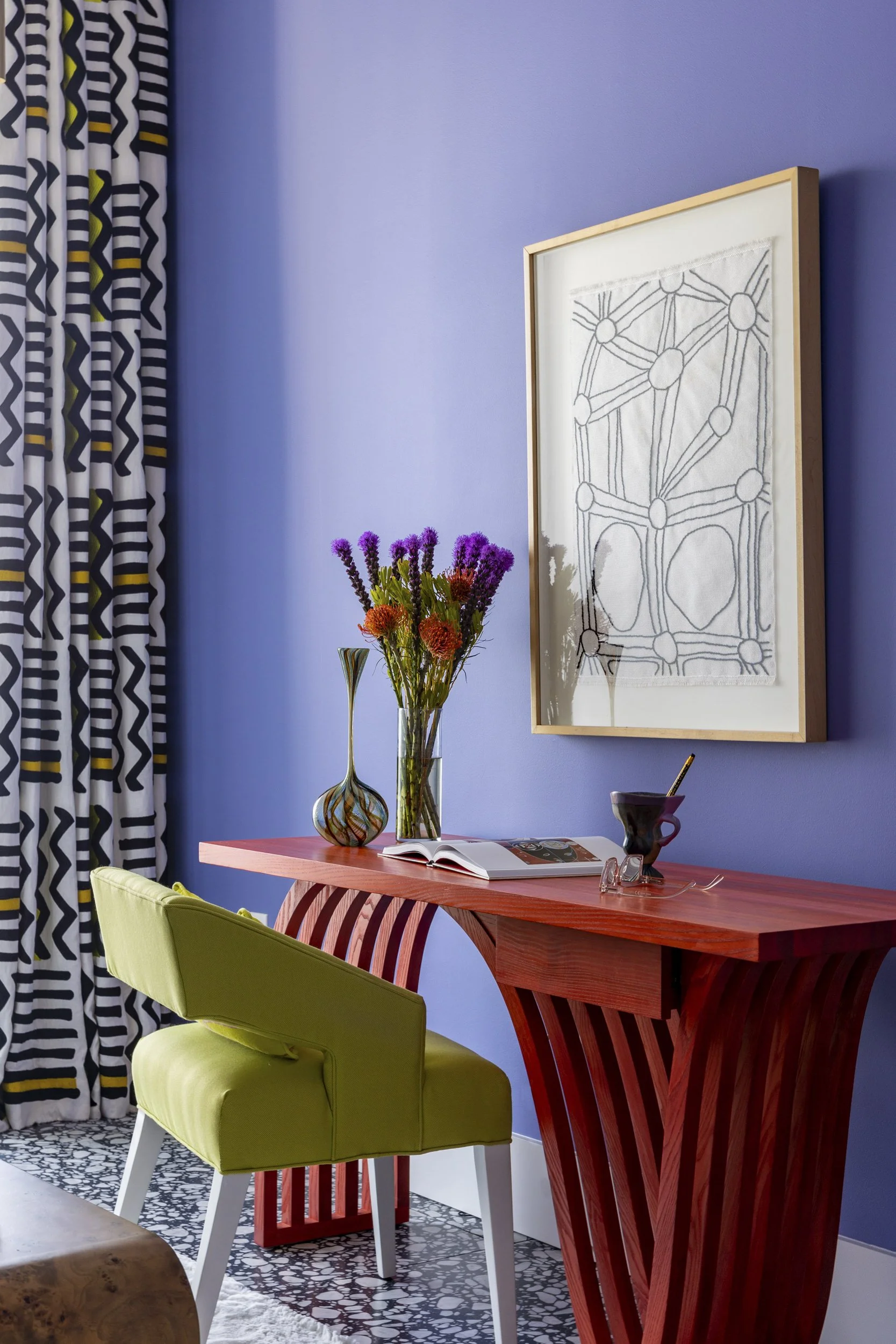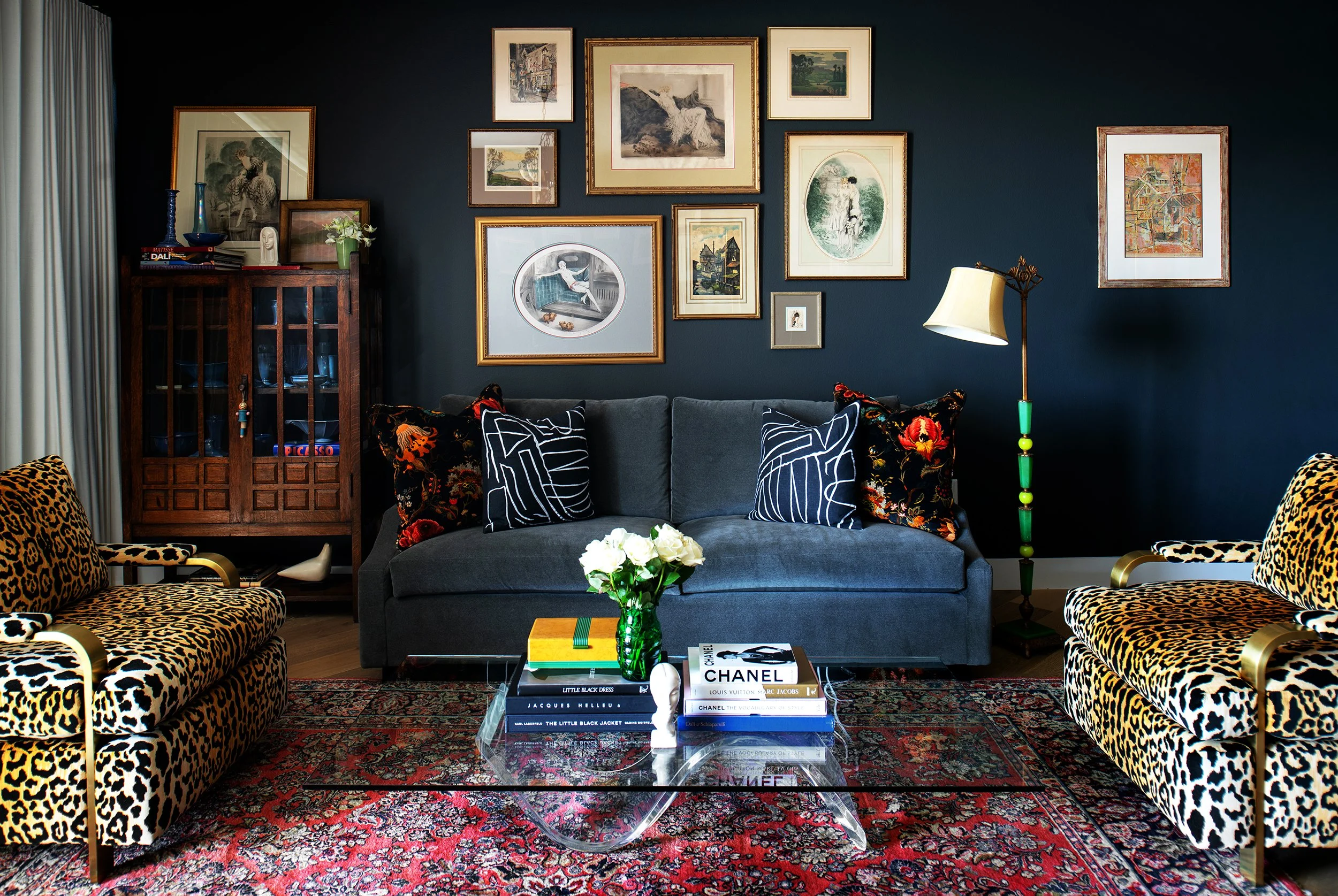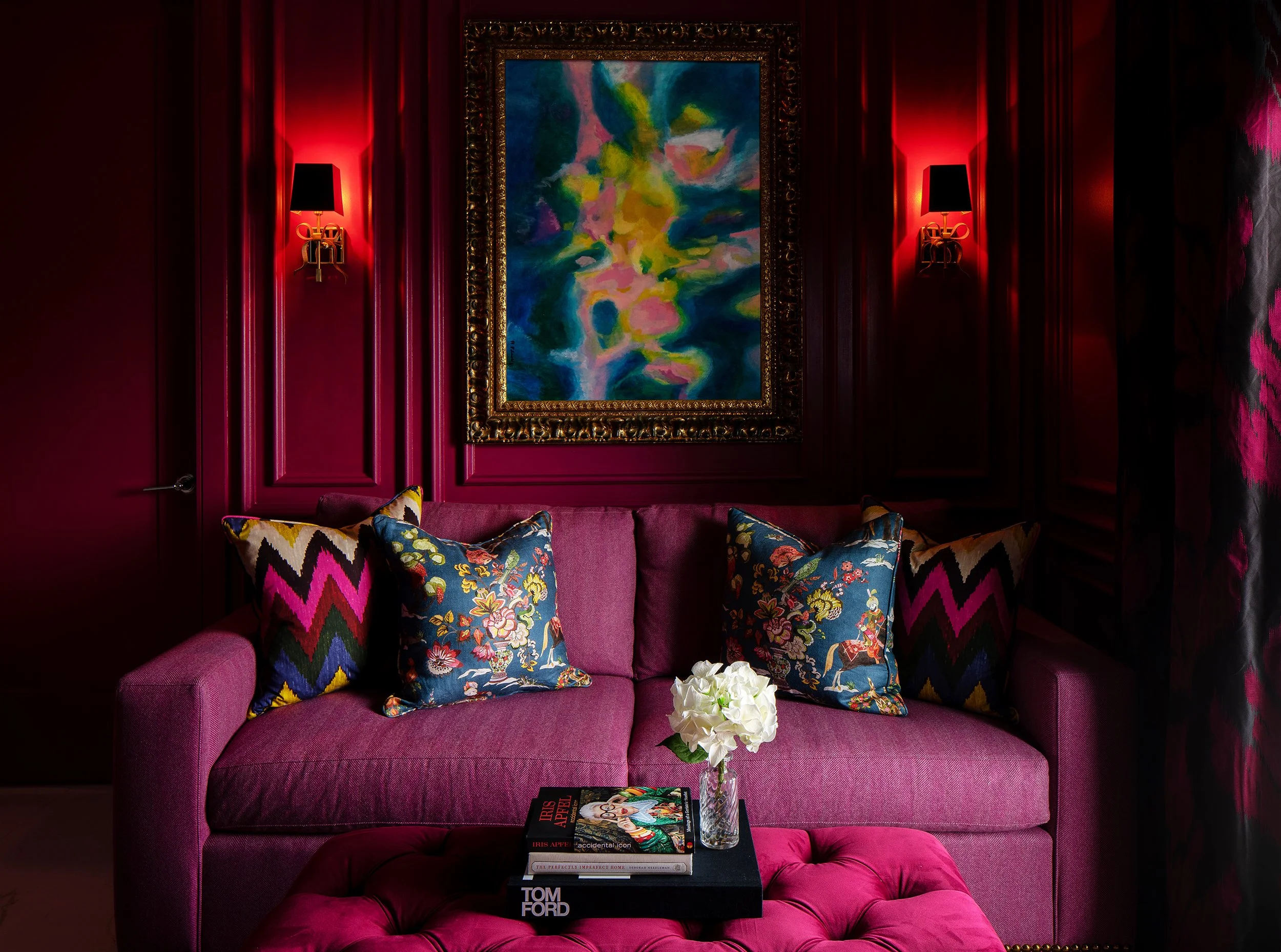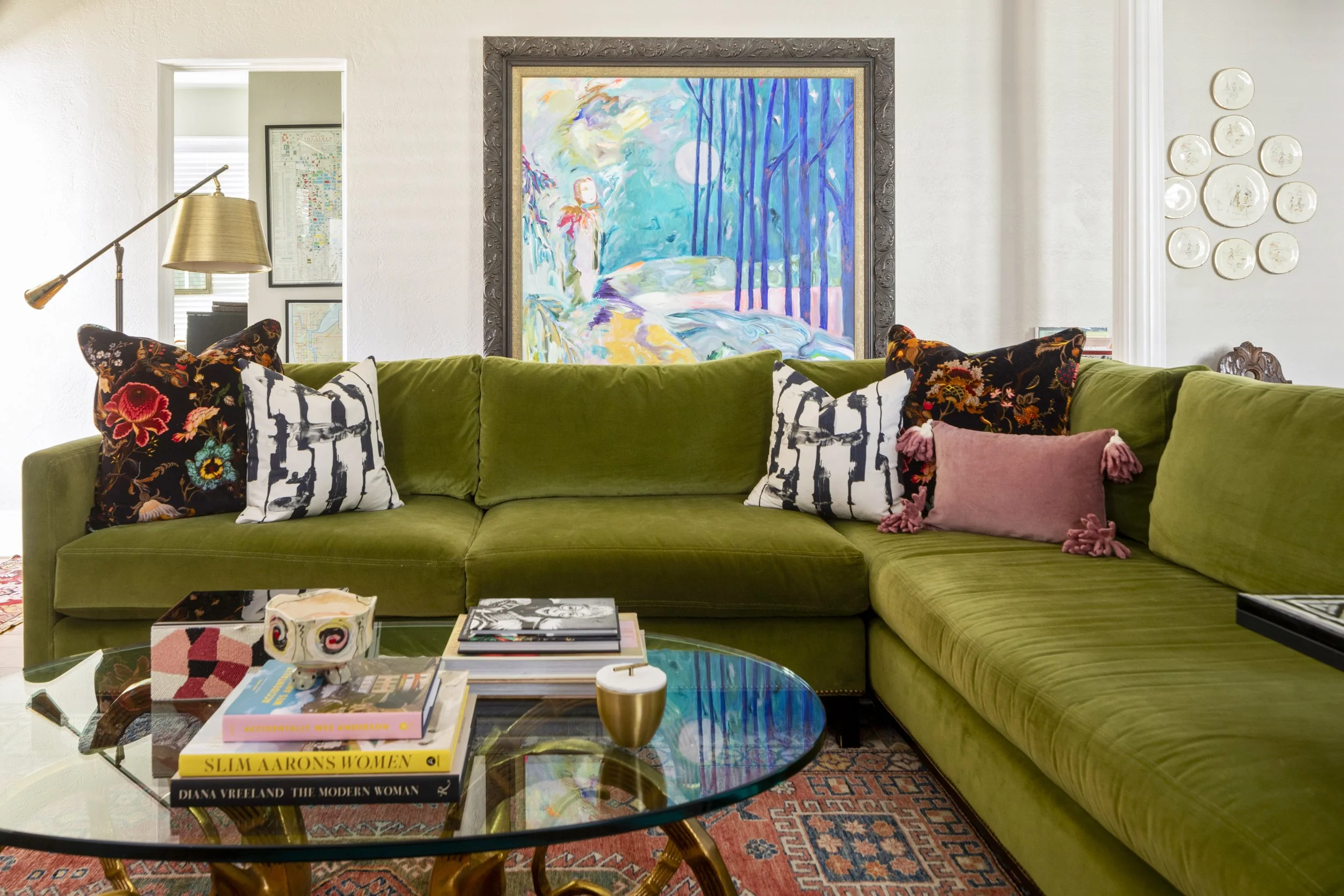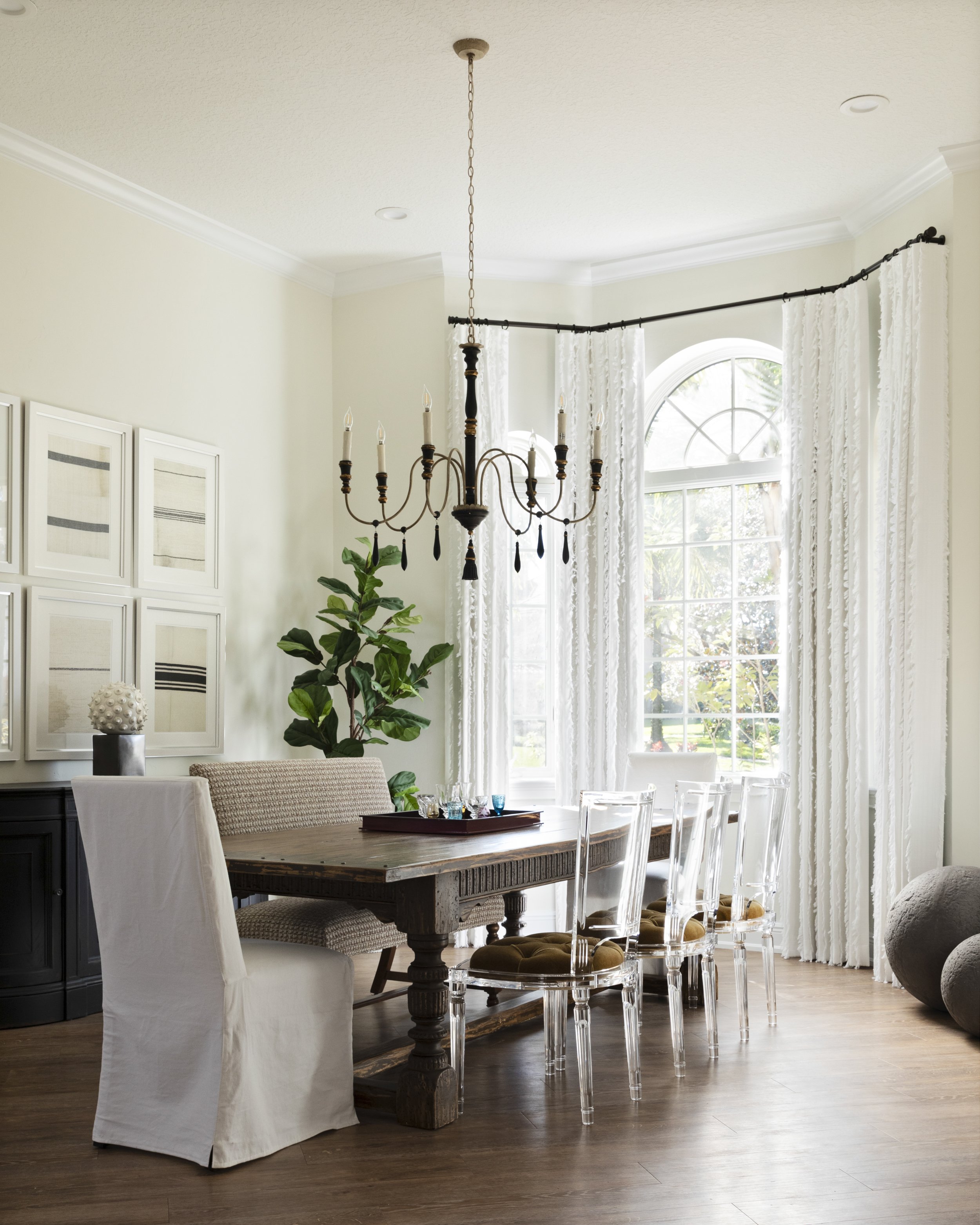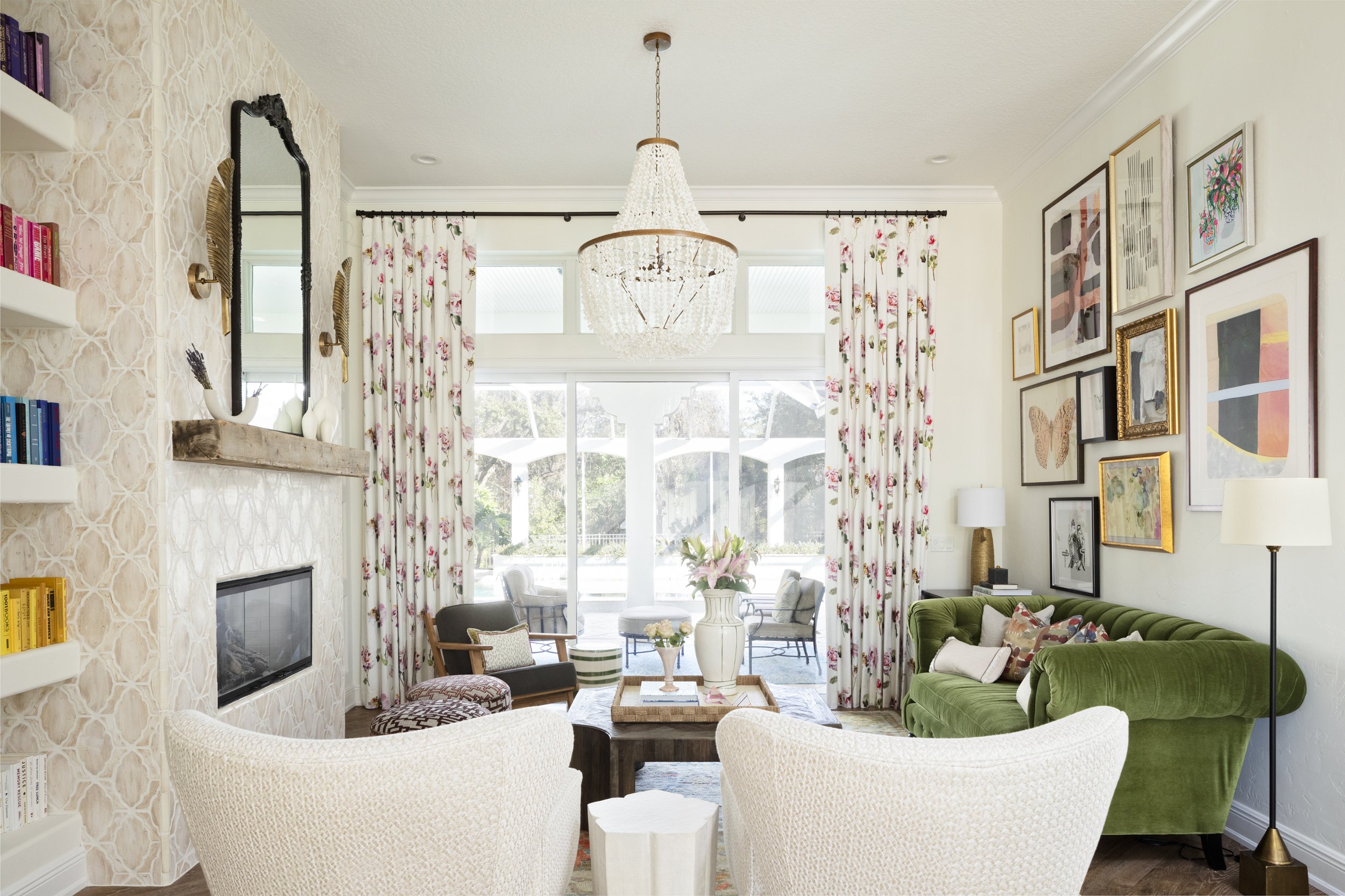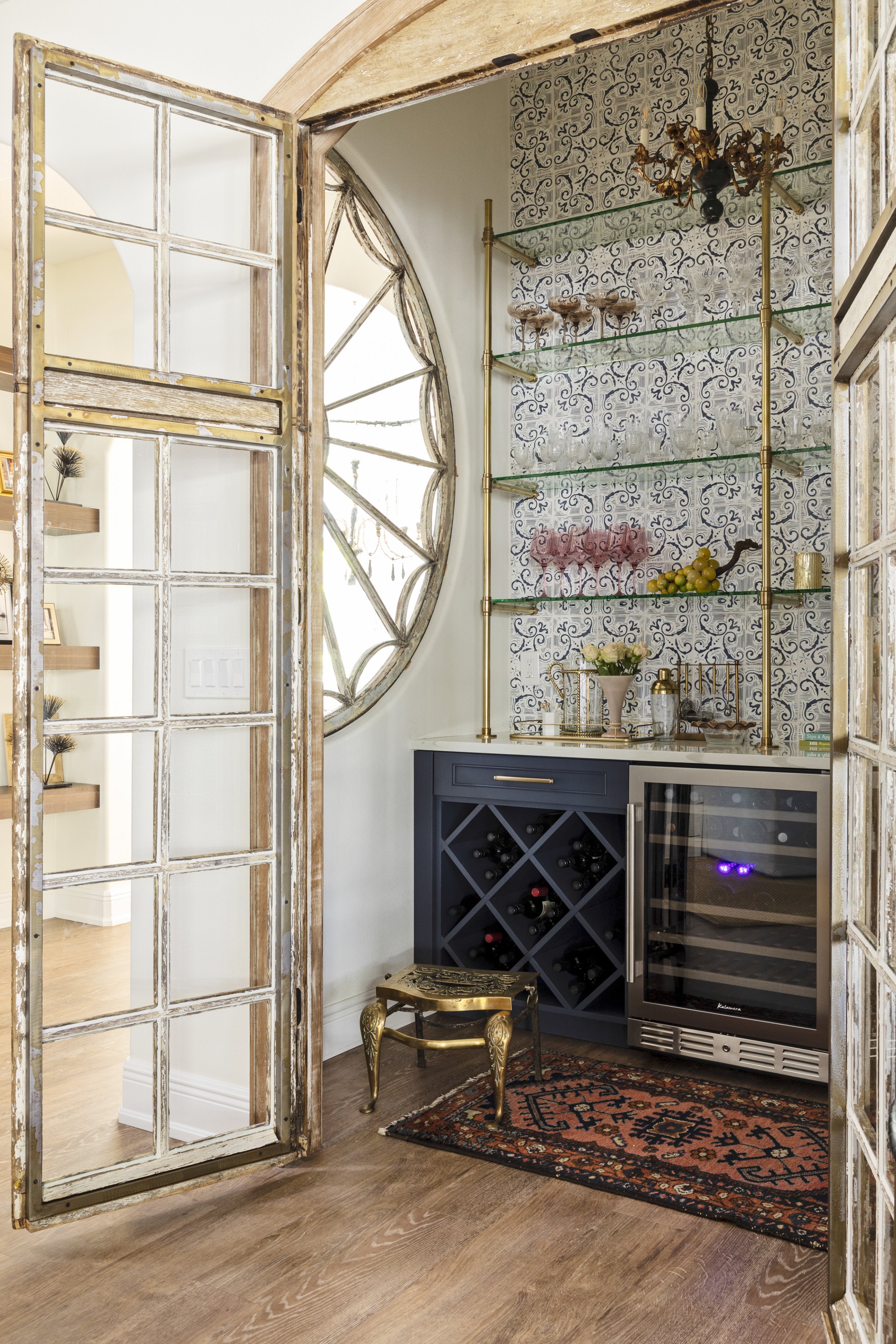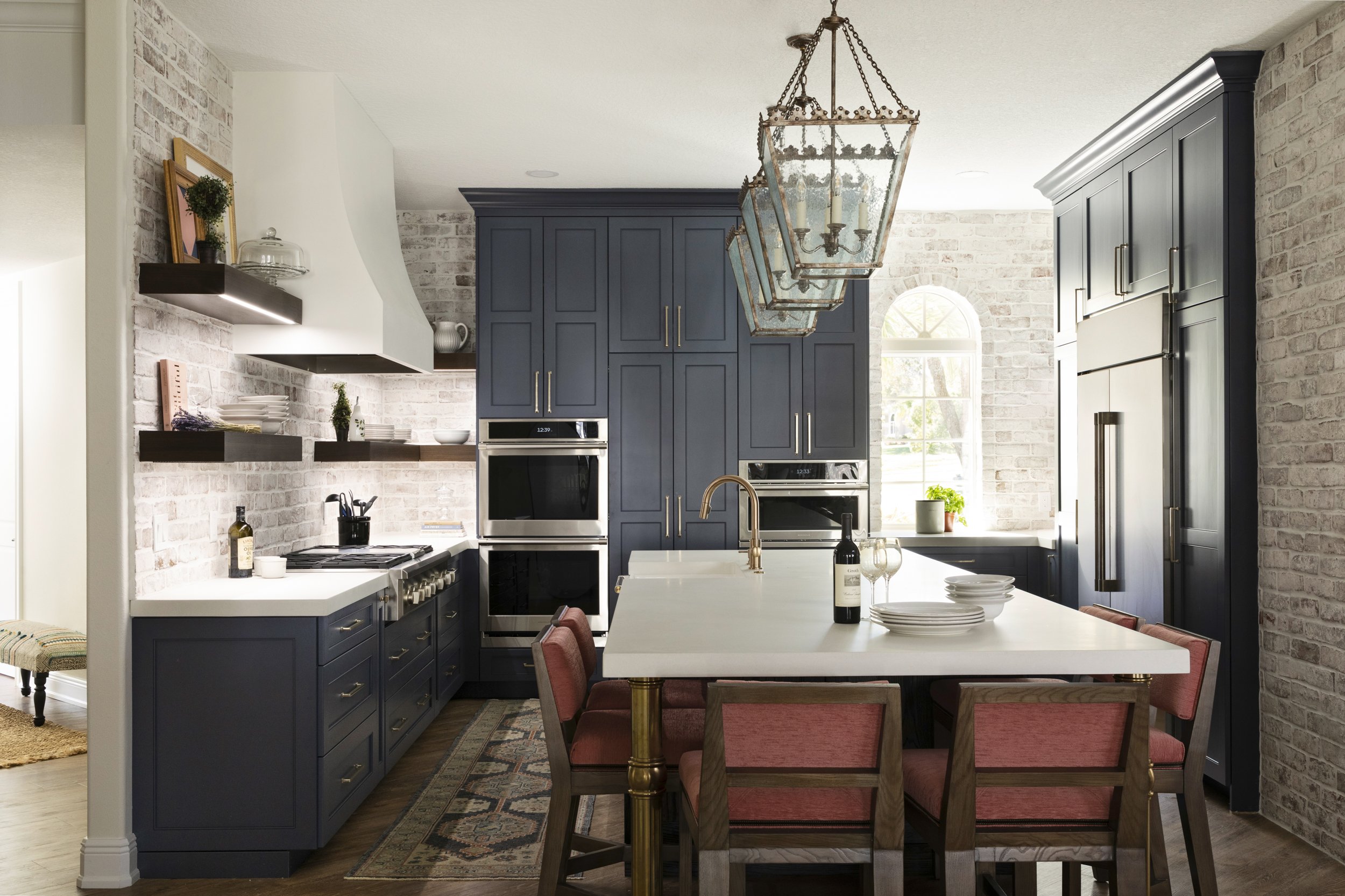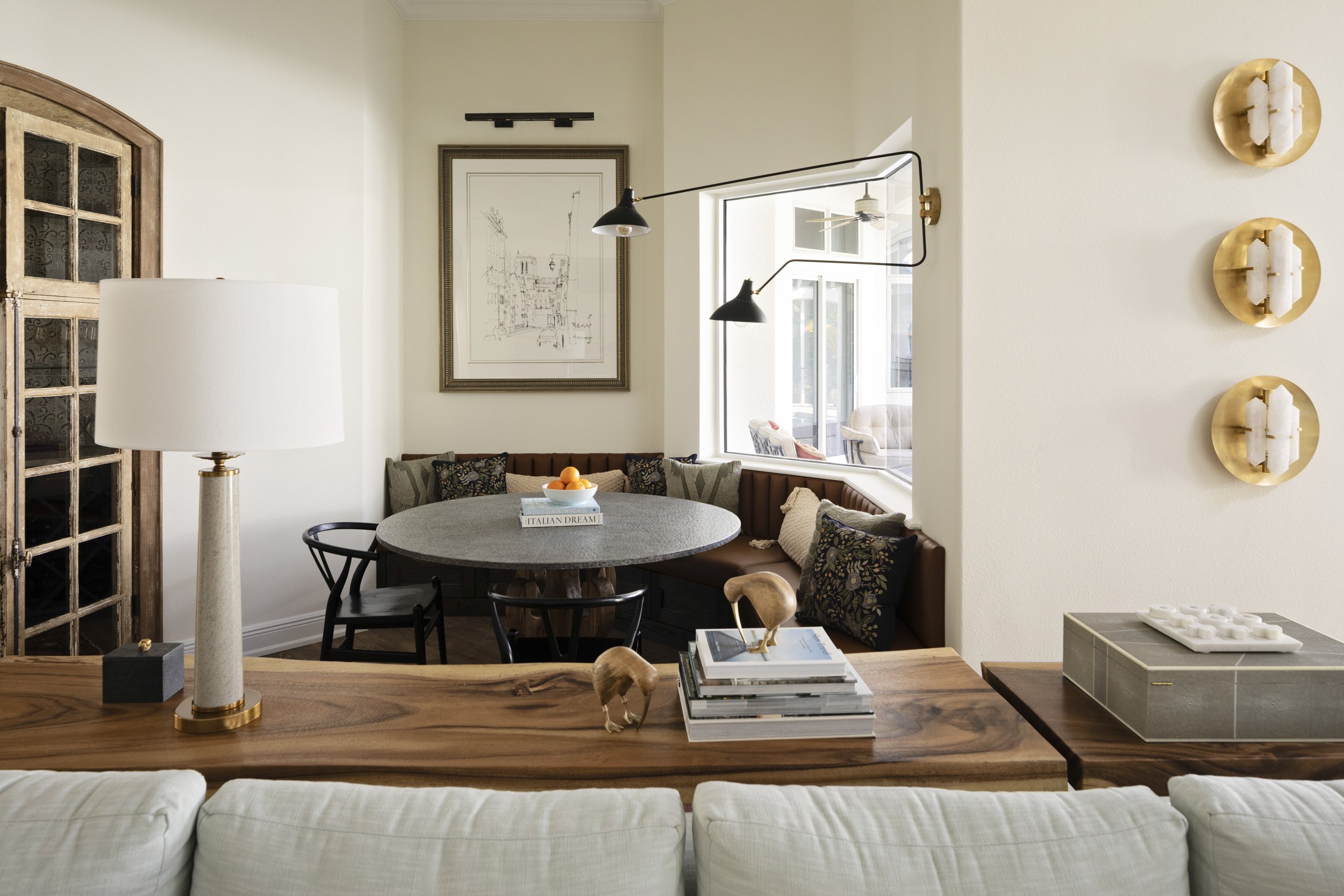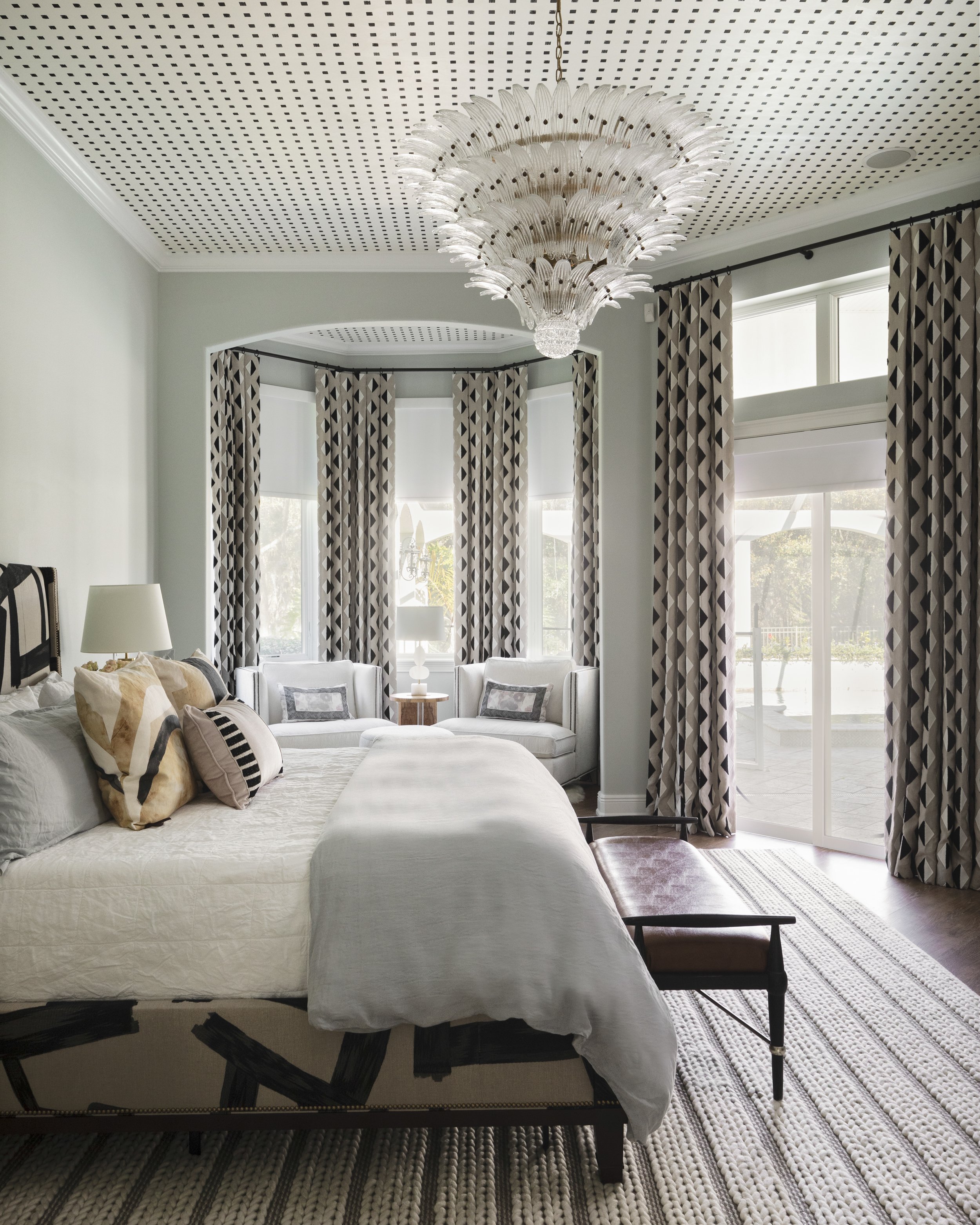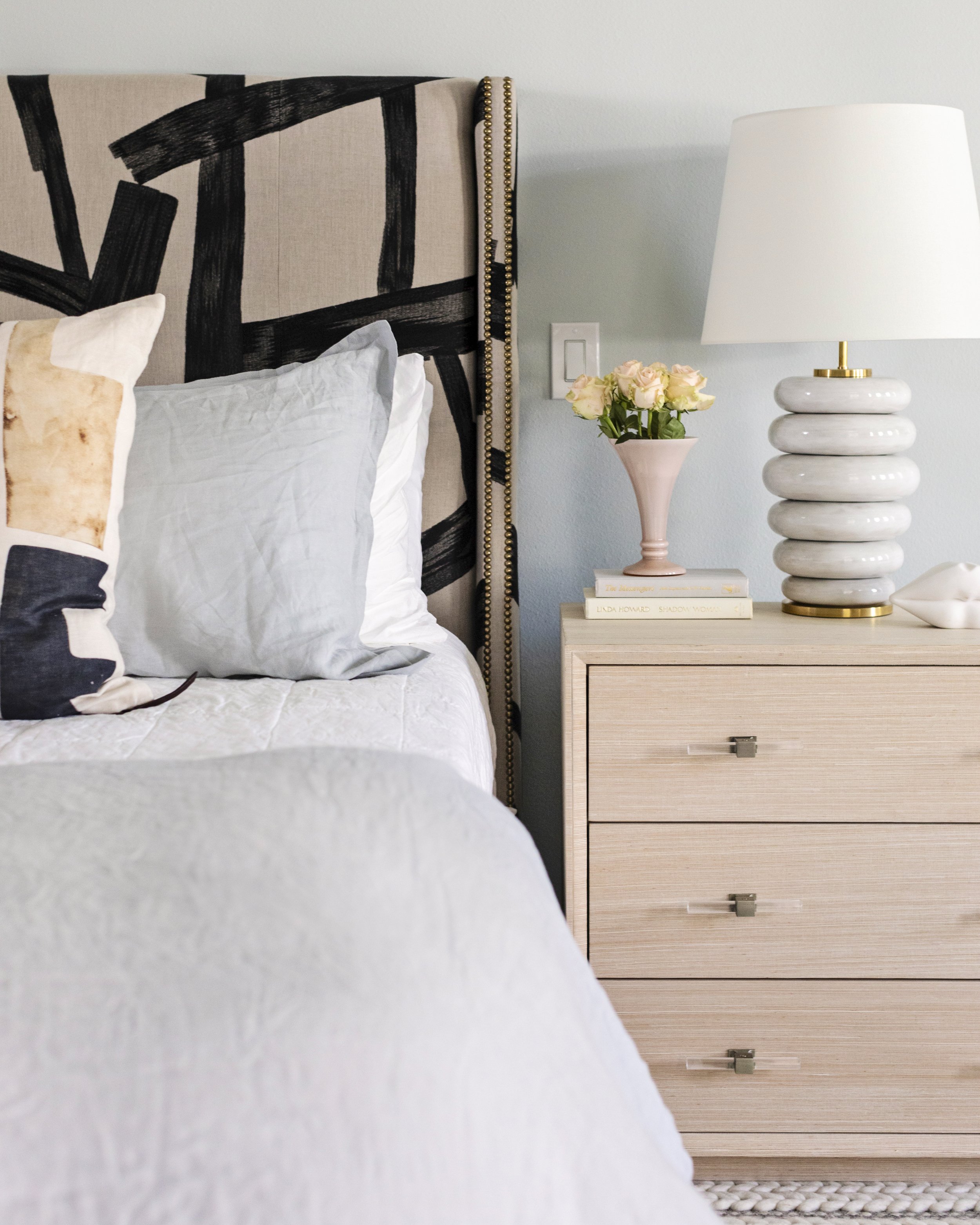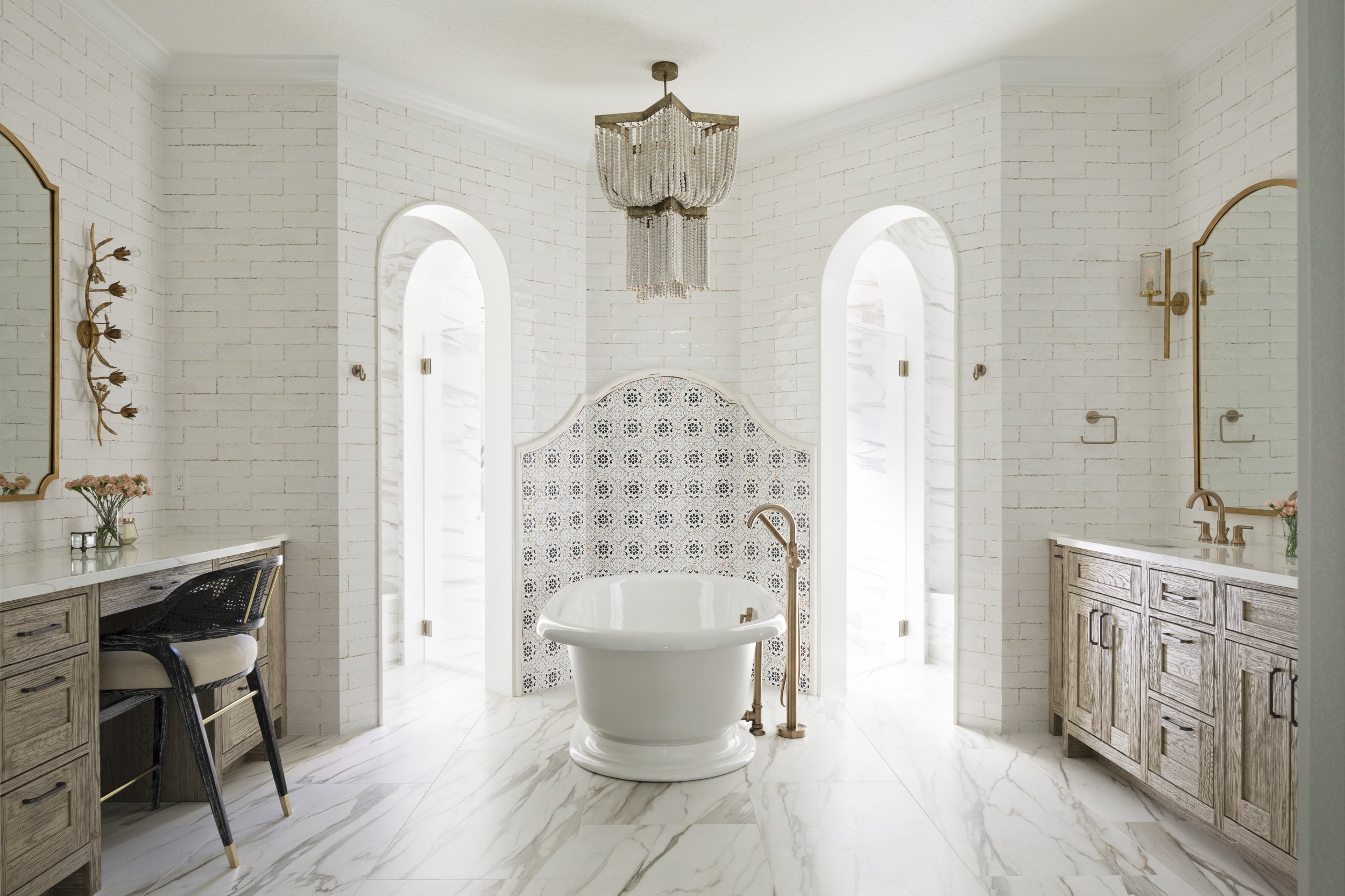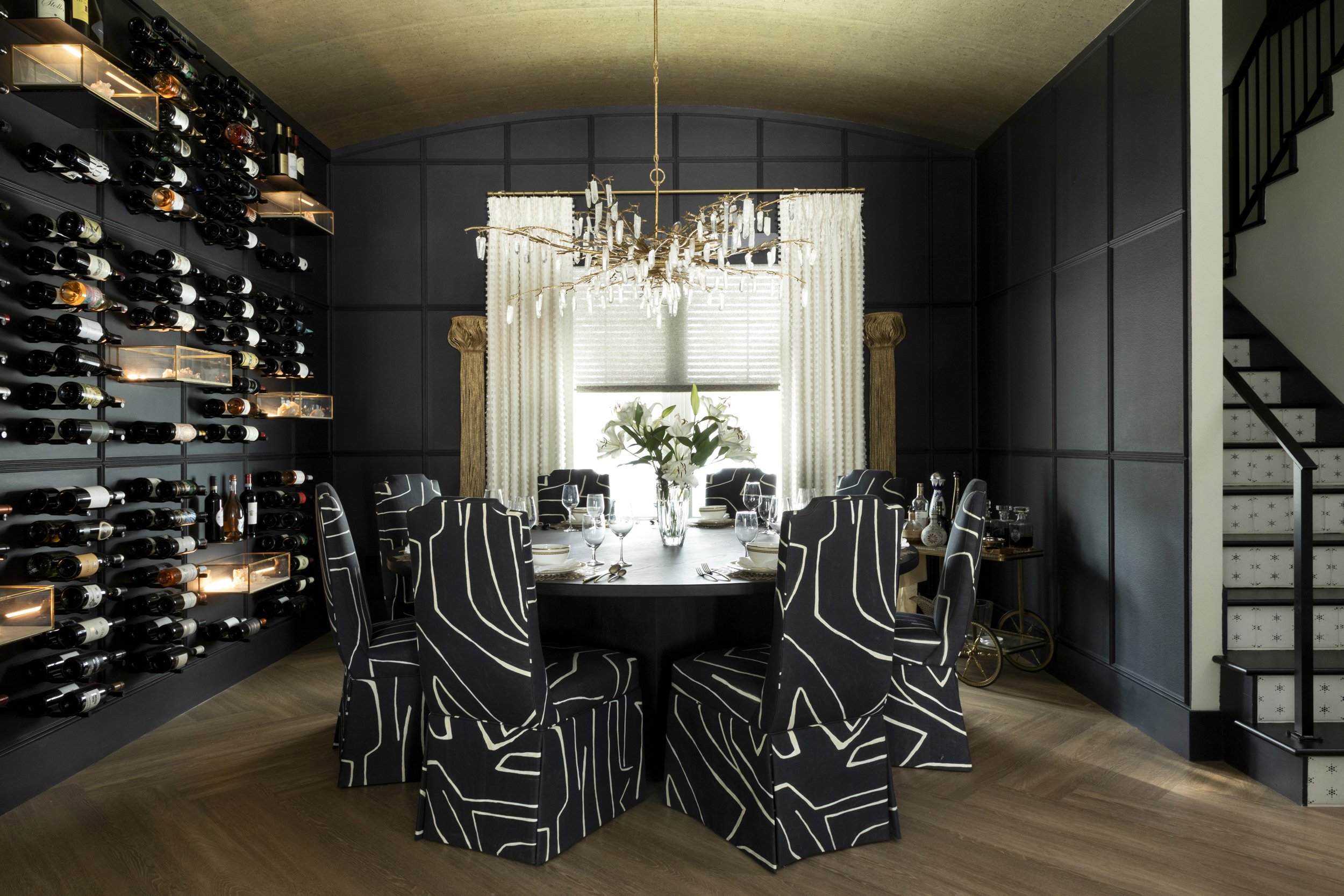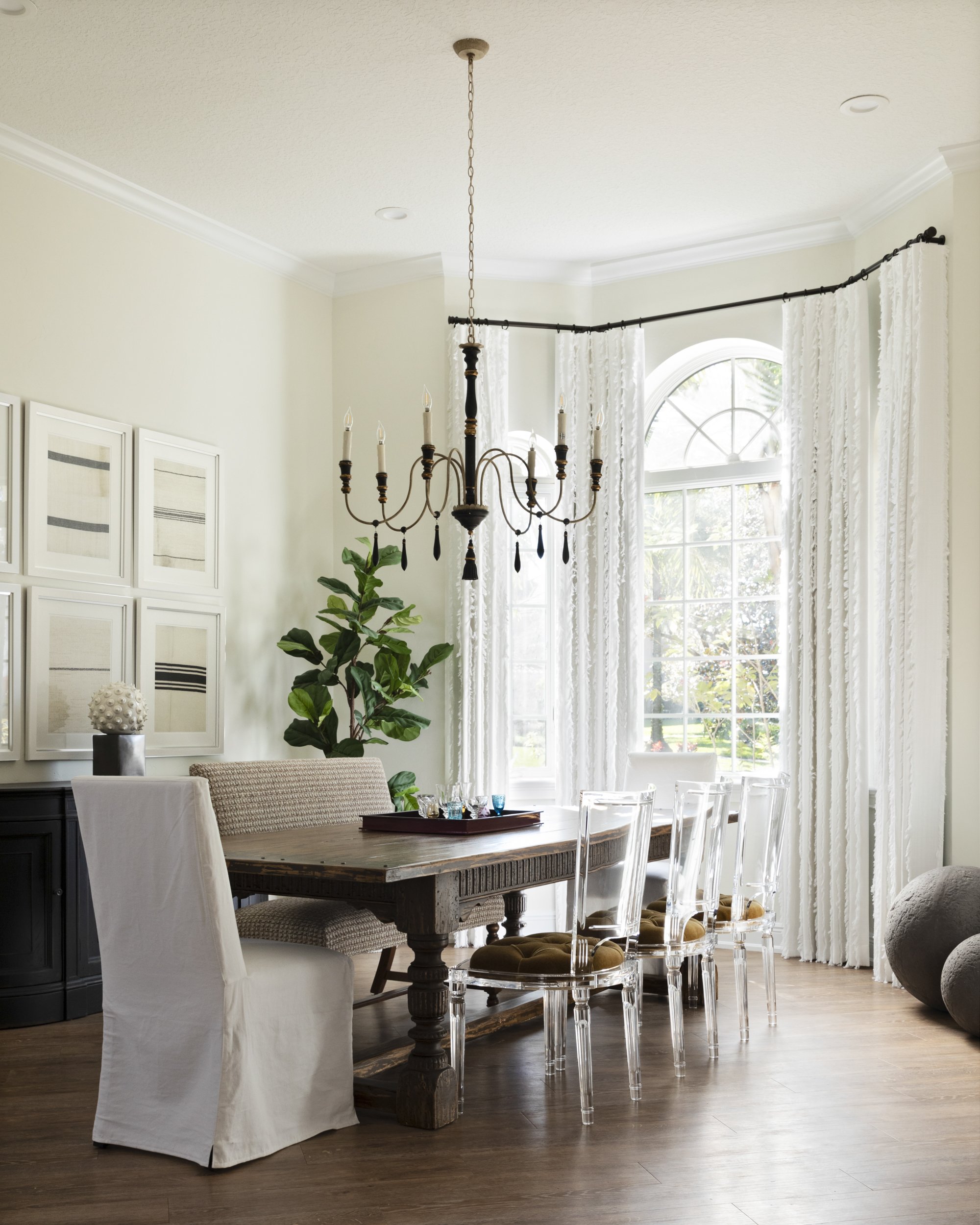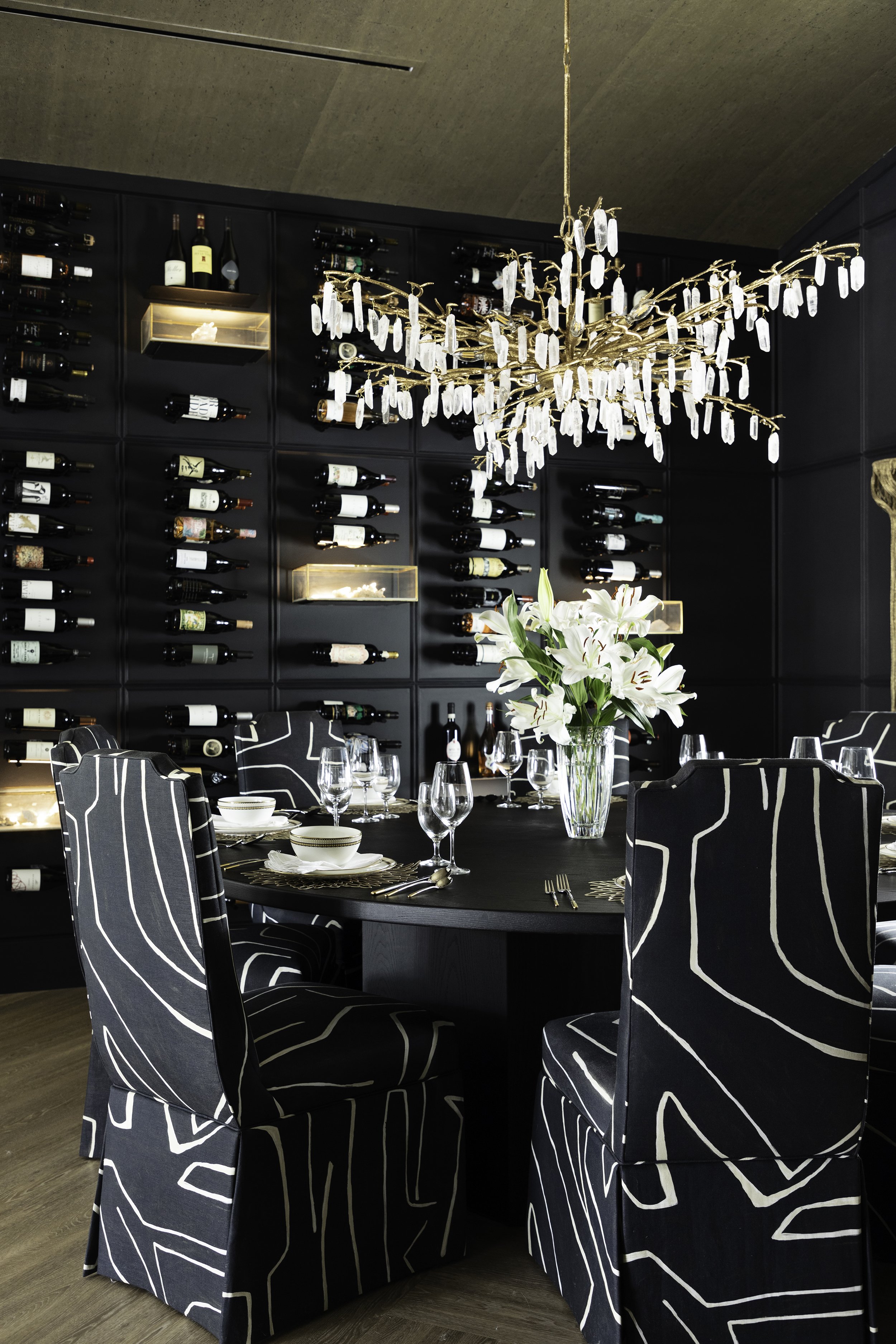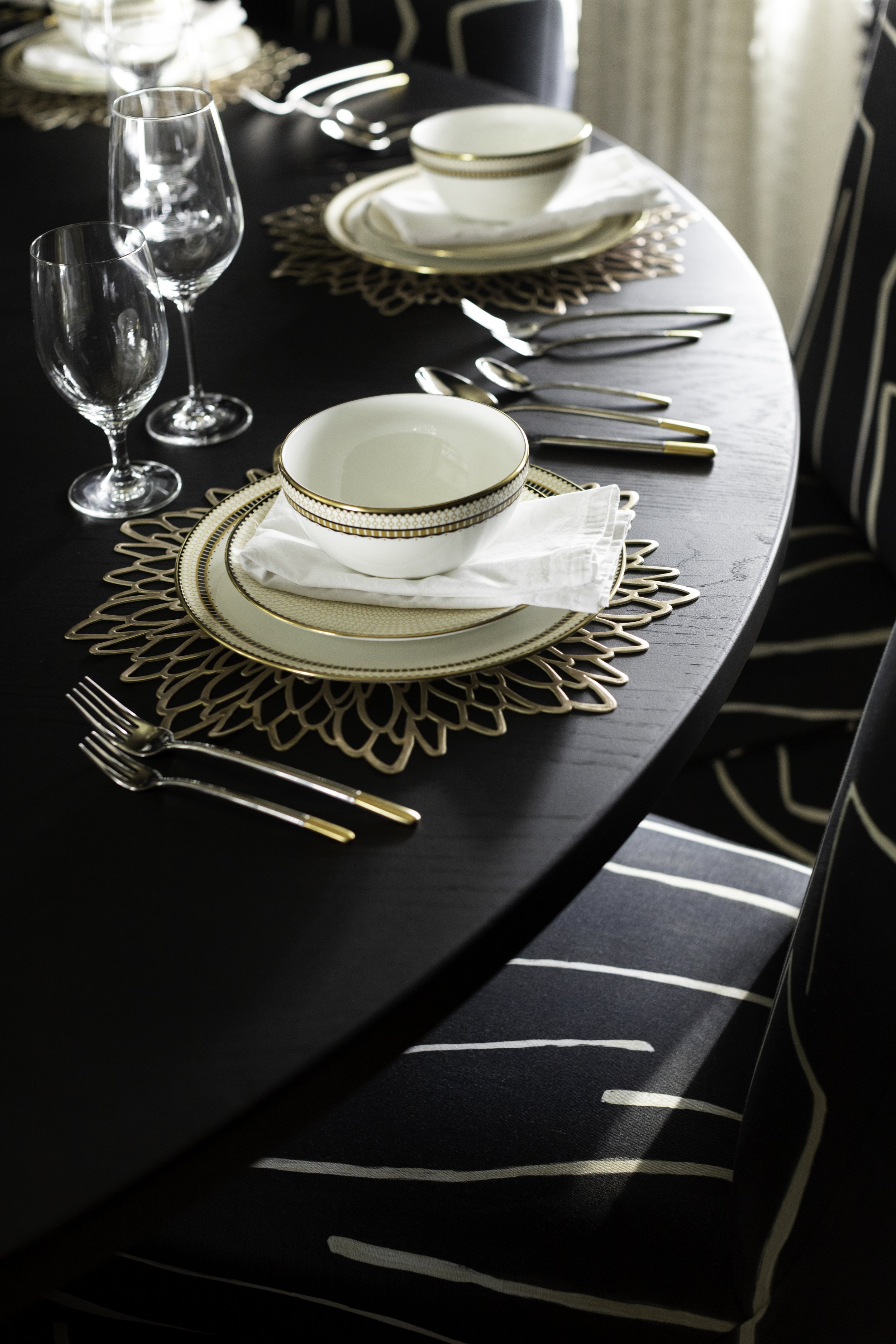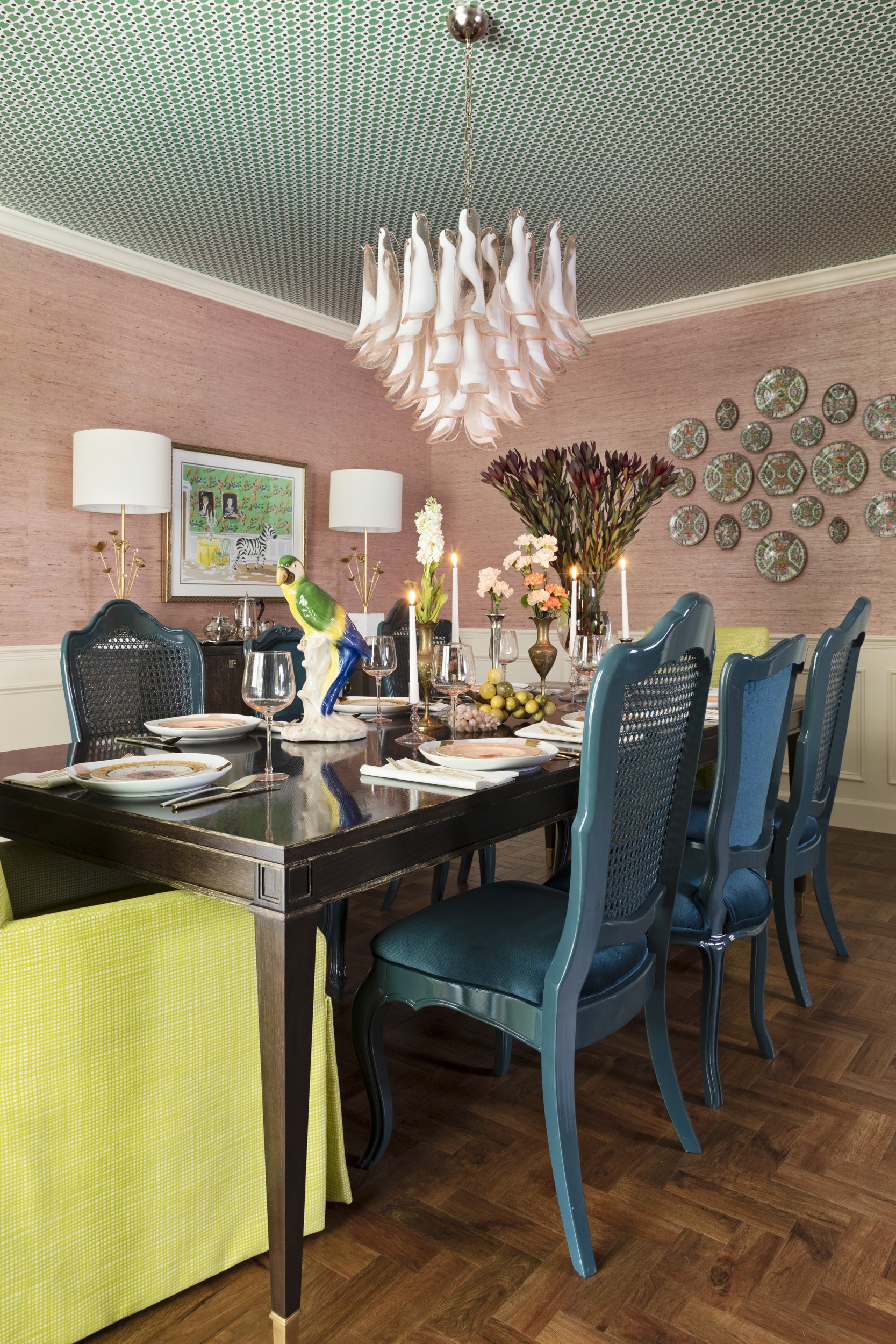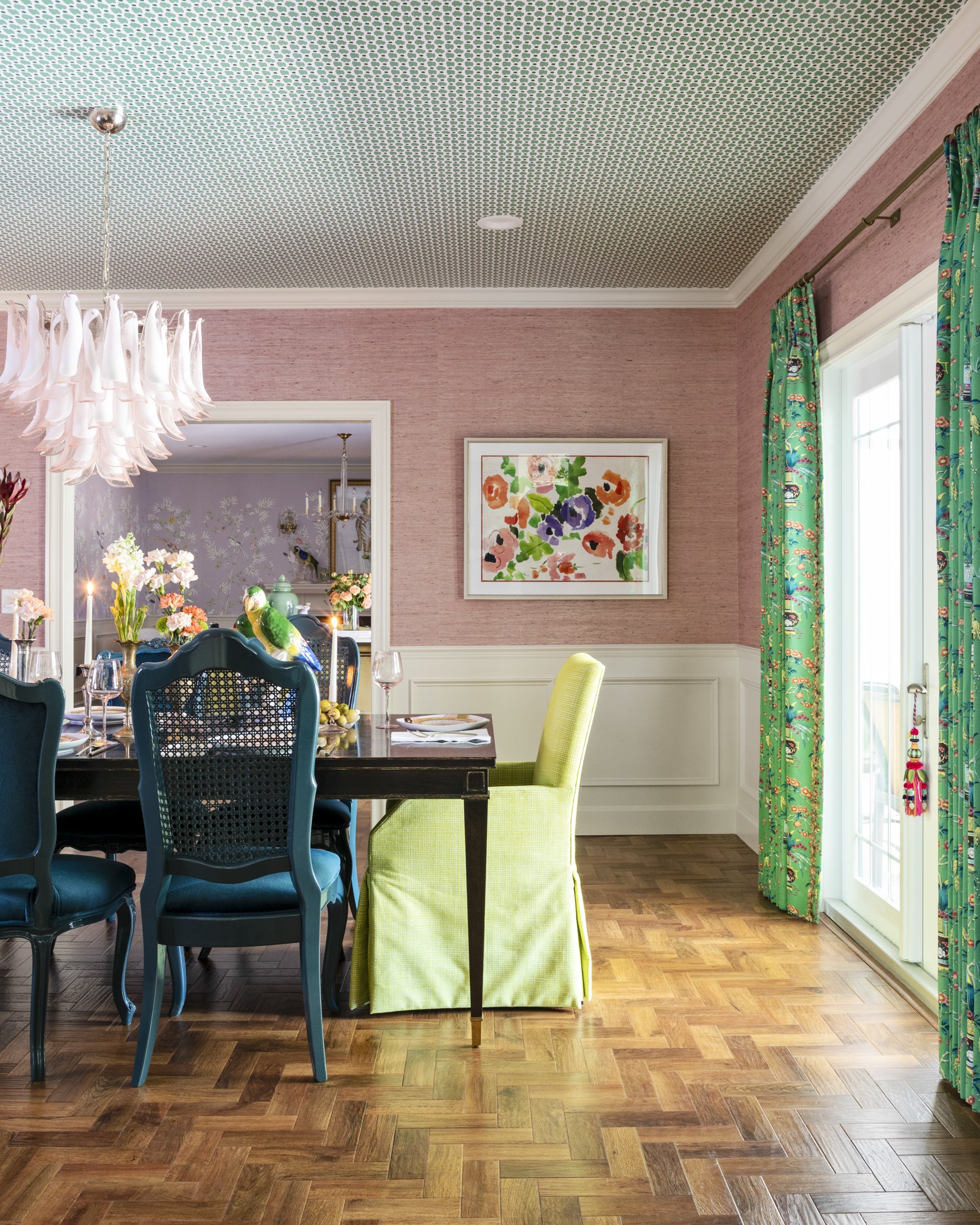Drapes Make a Significant Impact on Every Room
When you are redecorating, renovating, or building a new home, by the time the project nears completion, you may have little energy to think about window treatments.
What a shame!
Letting drapery be an afterthought is a disservice to the space you are creating. Drapery is the perfect finishing touch that takes a room from nice to wow.
Let’s unpackage just a few of the reasons drapery is worth your time and attention. Find out why we might suggest drapes vs curtains.
photo Lisa Gilmore Design
1. Drapery adds visual height to any room.
Hanging drapery close to the ceiling makes a room’s walls look taller and the space feel larger.
For example, look at the drapery in this office. Because the drapes are hung above the window, your eyes are drawn up to the ceiling that was created by a multidisciplinary artisan who specializes in mineral plasters and bespoke finishes.
The drapery that Lisa custom designed and had made locally pops against the dramatic, orange dome chair. And don’t miss the Jonathan Adler “Boss Lady” pillow for a fun twist!
photo Lisa Gilmore Design
2. Drapery visually softens a space.
Drapery is one way to make a space feel less cold and more welcoming.
Look at how the blush window treatments in this primary bedroom soften the black walls and add a cozy feel to the room. Coziness is especially important in spaces that you want to relax in, such as bedrooms or living rooms.
photo Lisa Gilmore Design
3. Draperies help reduce noise.
Have you noticed how sound echoes off the walls in an empty room? Draperies, rugs, throws, and pillows all help dampen noise.
This is important to keep in mind when creating a home office space. Draperies absorb noise so your audio on conference calls sounds clear and crisp.
photo Lisa Gilmore Design
4. Draperies are a form of art.
If you are trying to create a space that is eye-catching and colorful, selecting solid white or beige drapery probably isn’t the best choice.
Drapery is an opportunity to inject interest and creativity into a room. The patterns and colors are endless, and the trimming options can take your space to the next level.
photo Lisa Gilmore Design
This bright, floral print Scalamandre drapery the Lisa Gilmore Design team chose for this Snell Isle vacation condo was the extra pop of color this guest room needed. It perfectly complemented the royal blue bed from Bernhardt.
There are many other reasons drapery is important for a room, including making a space more energy efficient, creating a better environment for sleep (in bedrooms with blackout drapery), controlling the amount of light in a room, and adding privacy.
photo Lisa Gilmore Design
FAQs
1. Drapes vs Curtains, what is the difference?
The words curtains and draperies are often used interchangeably, but they are actually quite different. Curtains typically come in pairs and are sold in a variety of colors, fabrics, lengths, and types by many retailers. Draperies, on the other hand, are often custom-made and more intricate than curtains. They are also usually floor-length or longer and made of heavier fabric.
photo Lisa Gilmore Design
2. What curtains will be trendy in 2024?
In 2024, we predict that detailed valances like the green ones in this photo will be popular. The use of trim seems to be becoming more trendy as well, though we have always been a fan!
photo Lisa Gilmore Design
3. Which type of curtain is best for a bedroom?
For bedrooms, the Lisa Gilmore Design team uses a mixture of blackout privacy shades and layer decorative drapery with a blackout liner. Lisa prefers a lot of volume in bedroom drapery, and it creates an ultra-cozy effect!
photo Lisa Gilmore Design
While ready-made options from retailers are a nice option, if you have the budget for custom drapery, it is definitely worth it. If you are trying to decide between drapes vs curtains, we think drapes are the clear winner— they add warmth and style to any space.
This element of luxury cannot be replicated. Think of it like getting your favorite outfit tailored– afterward, it perfectly fits your body. That’s what custom drapery does for a space– perfect scale, volume, and textile!
To get more tips, see our projects, and find ideas for adding liveable glamour to your home, follow me on Instagram or sign up for our newsletter.
